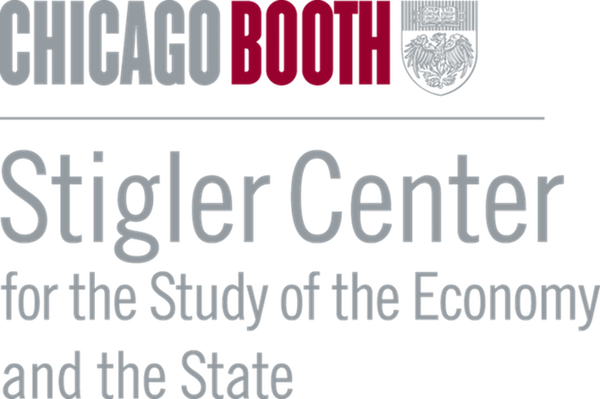The abundance movement, which seeks to lift the burden of inefficient regulation off the private sector to unleash equitable growth, has become the policy platform for many liberals. Dylan Gyauch-Lewis argues that the movement fails to account for the costs of externalities that many of the regulations it derides seek to address.
Government efficiency, while a perennial issue, has become something of a theme in 2025. The second Trump administration unleashed Elon Musk’s Department of Government Efficiency (DOGE) on the federal executive branch to cut costs. The initiative is the embodiment of the startup mantra “move fast and break things.” DOGE certainly did go fast. And it certainly did break things. But even conservatives like the Manhattan Institute’s Jessica Riedl recognize that Musk’s metaphorical chainsaw has not made a meaningful dent in spending. It has, at best, snagged some culture war victories and hollowed out internal checks on unilateral executive authority.
But the emphasis on government efficiency has not been confined to the right. In March, journalists Ezra Klein and Derek Thompson published their much-discussed Abundance, which The New Republic described as the “anti-DOGE.” The book still emphasizes simplifying or cutting government regulation to lower costs and spur growth, but through a more progressive, humane approach with the aim of achieving widely shared prosperity. Abundance, a number-one New York Times bestseller, has run the discourse table for several months now. California Governor Gavin Newsom gave Klein a shoutout upon signing the rollback of some environmental protection rules for housing construction—a pet issue of the broader abundance movement that received explicit mention in Abundance.
Even democratic socialist Zohran Mamdani, the Democratic nominee for New York City mayor in the upcoming election, got in on the action. In an interview on Thompson’s podcast, Plain English, Mamdani said:
As someone who is very passionate about public goods, about public service, I think that we on the left have to be equally passionate about public excellence. And one of the most compelling things that I think Abundance has brought into the larger conversation is how we can make government more effective, how we can actually deliver on the very ideas that we are so passionate about, and a recognition of the fact that any example of public inefficiency is an opportunity for the argument to be made against the very existence of the public sector.
While government efficiency is stereotypically a concern for those on the right, Democrats and Republicans alike have made streamlining government a priority for decades. The Clinton administration pioneered the Third Way movement in the United States, which advocated for fiscally conservative policies such as workism over welfare. Reinventing Government, the 90s-era version of Abundance that argued for more accountability and cost-benefit analysis for the federal bureaucracy, motivated Vice President Al Gore’s “National Performance Review,” which made recommendations for how to introduce private-sector-style efficiency into the government.
Yet, 2025 has seen discourse about government efficiency rise above and beyond the routine back-and-forth clashes over issuing permits, soliciting community input, and other aspects of daily governance. Tech billionaires, liberal pundits, and New York democratic socialists are all talking about the need for a government that works. They’re definitely onto something; the public feels like the government is not serving their interests, that the system is broken.
Mamdani’s articulation is particularly incisive. Effectiveness is important, not just as cost control, but because it is a mechanism for realizing the change about which people are passionate. That regulation and policies must be effective in delivering results is where champions of abundance are at their best (although it is worth noting that this point was made years earlier by The American Prospect Executive Editor David Dayen in his articulation of “deliverism”).
Where abundance advocates are at their worst, however, is when they equate efficiency with simply reducing regulatory burden and minimizing costs. In an accounting sense, this view is not wrong. More stringent requirements will increase the cost of the project. But in a more holistic economic sense, costs must also internalize a project’s externalities. These costs, such as a requirement to install tools to limit pollution from runoff or emissions, attempt to shift the burdens of a project onto the company (or sometimes government) building it and away from the people and communities who would otherwise bear them.
There are obviously some examples of regulations that create additional expenses and inefficiencies without a strong justification. Pork-barrel projects are a fact of the legislative process, and such inefficiencies are sometimes the entire point. Take, for instance, the hundreds of millions allocated to the infamous “bridge to nowhere” connecting Ketchikan, Alaska to Gravina Island, which had only 50 residents who didn’t even want the bridge. Other times, the justifications are bad. Much of the single-family zoning regime present across the U.S. comes out of a legacy of redlining and racial segregation. Rewinding many zoning laws could enable larger apartment complexes to provide more, and theoretically cheaper, homes. When it comes to these categories, the case for reform is often straightforward.
But there is a whole other genre where the additional costs of regulation seek to account for the tradeoffs of prioritizing cost efficiency. Far too often, both defenders of DOGE and proponents of abundance simplify or ignore tradeoffs ranging from disease to the extinction of entire species to worse quality of life.
Take for example, a Los Angeles ordinance that requires apartment buildings within 500 feet of a highway to use improved air filters. This is something that Klein and Thompson specifically criticize in their book on page 110 as an exemplar of the many frivolous, costly government requirements that stymie housing construction.
The ordinance requires developments near freeways to use filters with a minimum efficiency value rating (MERV) of 13 out of 16. Absent that requirement, state law mandates a MERV score of 6, while MERV 8 filters are the most common. At Home Depot and Lowe’s, MERV 8 filters run between $4-5, while MERV 13 filters cost about $23-25. So we’re talking about a $25 per unit cost to install MERV 13 filters. It’s recommended that air filters be replaced every three months. That comes to $100 per unit per year. A 100-unit apartment complex would then be paying an estimated $10,000 annually to comply with this regulation. To install MERV 8 filters would have cost $2,000 for one year. But that doesn’t mean much in a vacuum.
There is the other side of the ledger when accounting for the costs of installing MERV 13 filters. People living near highways are exposed to dangerous air pollution from vehicle exhaust, which increases risk of asthma, lung cancer, and other diseases. If the use of MERV 13 filters prevents just two cases of lung cancer in a development every decade, the total expenses paid for air filters will be largely offset. According to a 2017 study, first-line treatment for lung cancer cost patients over $1,100 and insurance companies $45,000. It’s projected to more than double by 2040. Factoring in other costs from lung diseases like lower productivity, lost work days, and follow-up care or second-line treatment expenses, the air filter requirement looks extremely reasonable, even in a purely financial sense. (And that’s not even getting into the less monetizable harms of illness like a loss of quality of life, which are worth paying to protect people from as well.)
Klein and other centrist liberals deride policy that seeks to account for all externalities as “everything bagel liberalism” (which, apropos of nothing, does make it sound more appetizing than the corollary of “plain bagel liberalism”). The critique is that progressives want policy to take into account health, the environment, handicap access, the rights of minorities and local communities, etc. With these considerations come more and more regulations, and thus more and more costs. Proponents of abundance criticize progressives for failing to think seriously about the tradeoffs of additional regulation. But simplifying policy and regulation to prioritize costs fails to recognize how costs arise as more than just the cost of material on a construction project or the time spent on paperwork. It fails to account for the externalities that these regulations were created to address in the first place.
The abundance movement is not DOGE. DOGE has destroyed the public service, indiscriminately cost thousands of civil service careers, left millions of the world’s most vulnerable to die from preventable disease, and exposed millions of Americans to environmental catastrophe. American scientific research has been decimated. The Internal Revenue Service staff dedicated to auditing wealthy individuals has been slashed, portending more tax evasion and $1 trillion in lost revenue. And all for fractions of pennies on the dollar. (DOGE claims to have cut $160 billion, but only $32.5 billion of that is backed up with receipts and even those savings seem exaggerated.)
To the credit of the abundance movement, its proponents recognize the importance of state capacity. However, in their vision for the political economy, regulations remain mostly a burden to be cut and an obstacle to growth. The only tradeoffs that really matter are the easily quantifiable costs rather than the costs that society incurs when those regulations are lifted.
The idea that our government is inefficient is a simple narrative, which is why it is so effective: get the government out of the way, and the private sector will deliver growth. (Or, sometimes, get the government out of its own way and it will do so itself.) The irony is that if the government is not achieving its goals of creating shared abundance, it’s because there has been a decades-long underinvestment in the administrative state. Many of the biggest perceived inefficiencies of our civil service would actually be better addressed with more investment in its staff rather than less. Take, for example, the IRS, where the costs of hiring additional staff would be more than offset by increased revenue collection from catching more tax evasion by the rich. The government is certainly full of inefficiencies, but this narrative, embodied by both DOGE and the abundance movement, too frequently misses two things: some of these so-called inefficiencies are a result of covering the costs of externalities, and some of these inefficiencies are due to too little bureaucracy rather than too much.
Author Disclosure: Dylan Gyauch-Lewis works for the Revolving Door Project, which is fiscally sponsored by the Goodnation Foundation.
Articles represent the opinions of their writers, not necessarily those of the University of Chicago, the Booth School of Business, or its faculty.
Subscribe here for ProMarket’s weekly newsletter, Special Interest, to stay up to date on ProMarket’s coverage of the political economy and other content from the Stigler Center.







